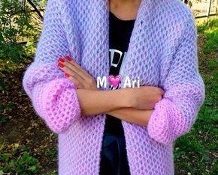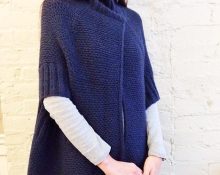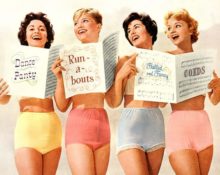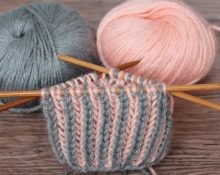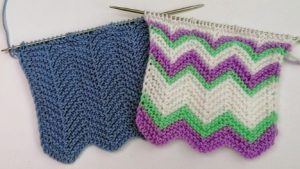
Zigzag is a simple and cute pattern. Every craftswoman, even a beginner, can repeat it. The finished product looks unusual, but it doesn’t take much time.
Material selection
Seasonal differentiation largely depends on the thickness of the thread. For winter, a thick woolen thread or thread containing wool is suitable. A product knitted from it will be voluminous and will warm you in cold weather. A blanket knitted from such a thread would look good in the interior. But for the summer, you should choose a thin thread; it will make light, almost weightless dresses, pullovers and other items of clothing.
For children, it is worth choosing a material based on cotton, or acrylic may be included, it will not irritate the baby’s delicate skin.
The color of the material can be different, even if sometimes it seems that the shades do not match, once you start knitting, you can see a bright and beautiful contrast.
The number of colors selected may also vary.You can knit a single-color item, or you can combine all the colors of the rainbow.
It is important here when choosing colors to choose only warm or only cold shades, then the product will look harmonious.
The thickness of the layers is also limited only by the imagination of the craftswoman. Thin, refined ones can alternate with thick ones.
Step-by-step production
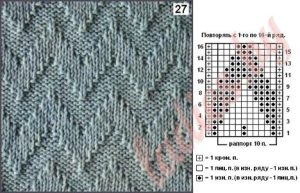
The finished design on the product consists of individual elements, one of which is a zigzag or a tick. The number of loops in one repeat may vary.
You can leave the edge without an edge, then it will be zigzag-shaped, like the pattern on the product, or you can knit an elastic band or rice as an edge, then the edge will be smooth and the product will not be stretched, the ends will not bend during use.
The width of the edge can also be any, so 1-2 edge loops or more are added to the loops for the pattern.
If one repeat consists of 10 loops, then for two you need to cast on 20 and two edge ones, if from 16, then the number of loops will be 34.
- Rows 1-4: knit with an elastic band.
- 5th row: edge, 1 knit, yo, 6 knit, three loops together, 6 knit, yo, 1 knit, yo, 6 knit, three loops together, 6 knit loops, yo, knit, purl.
- Row 6: knit according to the pattern.
- Row 7: repeat row 5.
Next, we knit all the even rows according to the pattern of the 6th row, and the odd ones - according to the pattern of the 5th row.
Knitting double-sided zigzags
This pattern will look great in men's clothing: scarves, hats, sweaters and so on. The pattern consists of knit and purl stitches. It is not difficult, but it requires attention.
The maximum effect is achieved when thick yarn is used for knitting, then the pattern is visible more clearly and looks more voluminous.
The pattern repeat, for example, will be 10 loops, then the total number with edge stitches will be 22.
- 1st row: remove the edge, purl 6, knit 1, purl 1, knit 1, purl one, alternate until the end of the row, finish with the edge, which we knit with a purl loop.
- 2nd row: knit according to the pattern.
- Row 3: remove the edge, knit 7, purl 1, knit 1, purl 1 and then alternate, knit the edge purl.
- Row 4: knit according to the pattern.
- Row 5: remove the edge, knit 1, purl 7, knit 1, purl 1.
- Row 6: knit according to the pattern.
- Row 7: remove the edge, knit 1, purl 1, knit 7, purl one and so on.
- Row 8: repeat.
- Row 9: remove the edge, knit 1, purl 1, knit 1, purl 7 and so on.
- Row 10: repeat the pattern.
- Row 11: chrome, 1 knit, 1 purl, 1 knit, 1 purl, 6 knit stitches.
- Row 12: repeat according to the pattern.
- Row 13: chrome, 2 purl loops, 1 knit stitch, 1 purl stitch, 1 knit stitch, 5 purl stitches.
- Row 14: knit according to the pattern.
- Row 15: chrome, knit 3, purl 1, knit 1, purl 1, knit 4.
- Row 16: repeat according to the pattern.
- Row 17: chrome, purl 4, knit 1, purl 1, knit 1, purl 3.
- Row 18: according to the drawing.
- Row 19: chrome, knit 5, purl 1, knit 1, purl 1, knit 2.
- Row 20: repeat.
The rapport is ready, then we repeat according to the above scheme.


 0
0